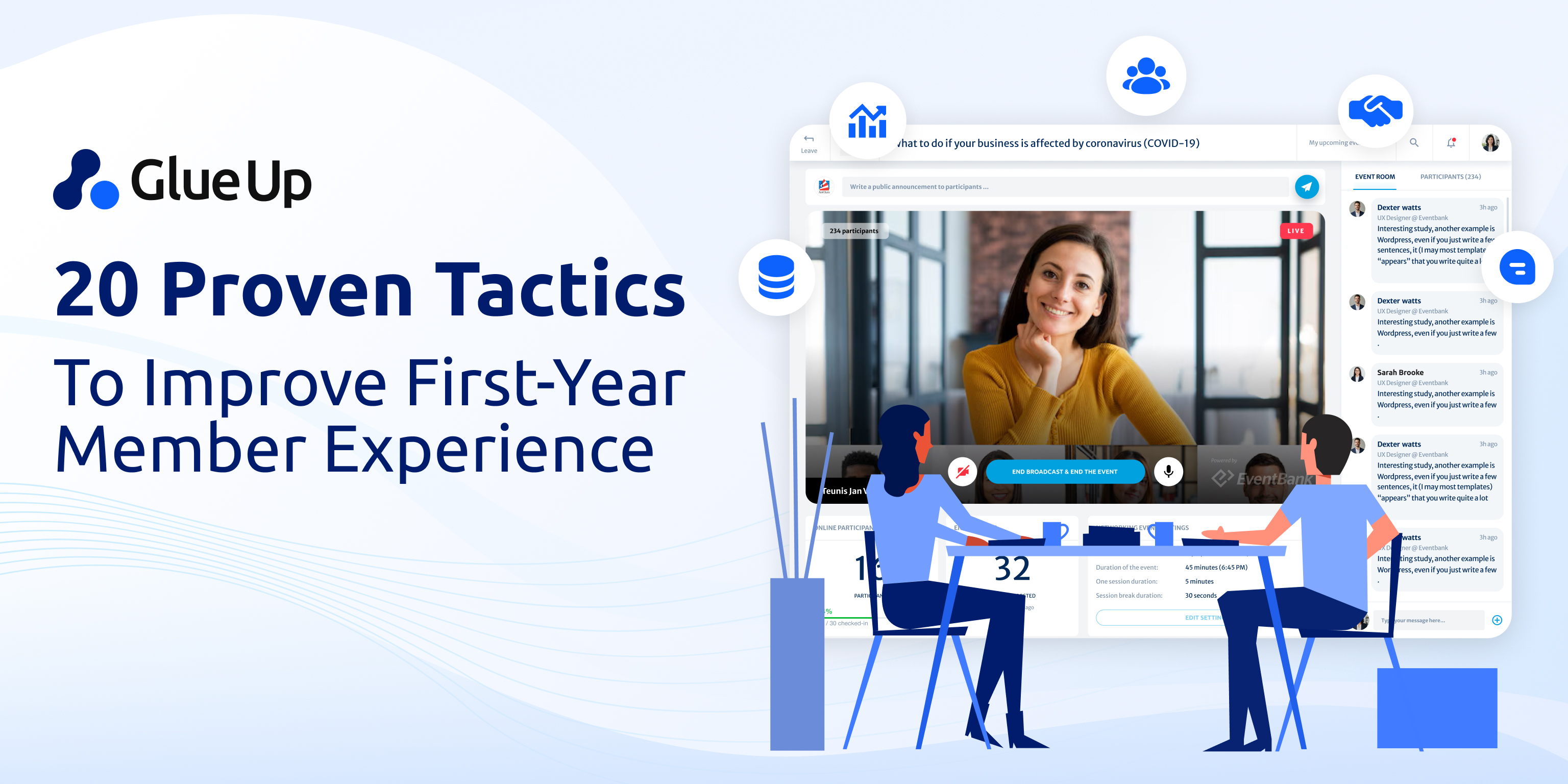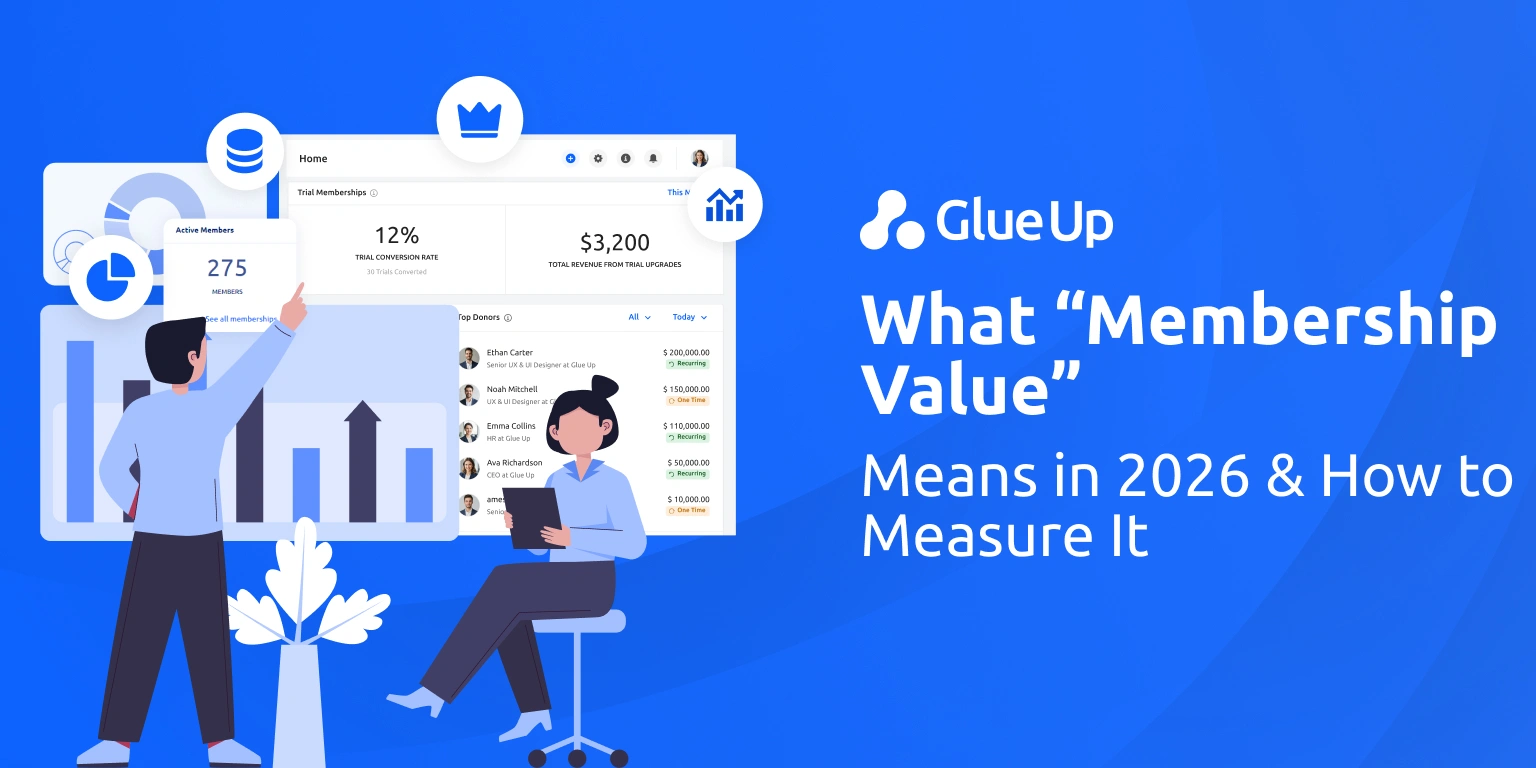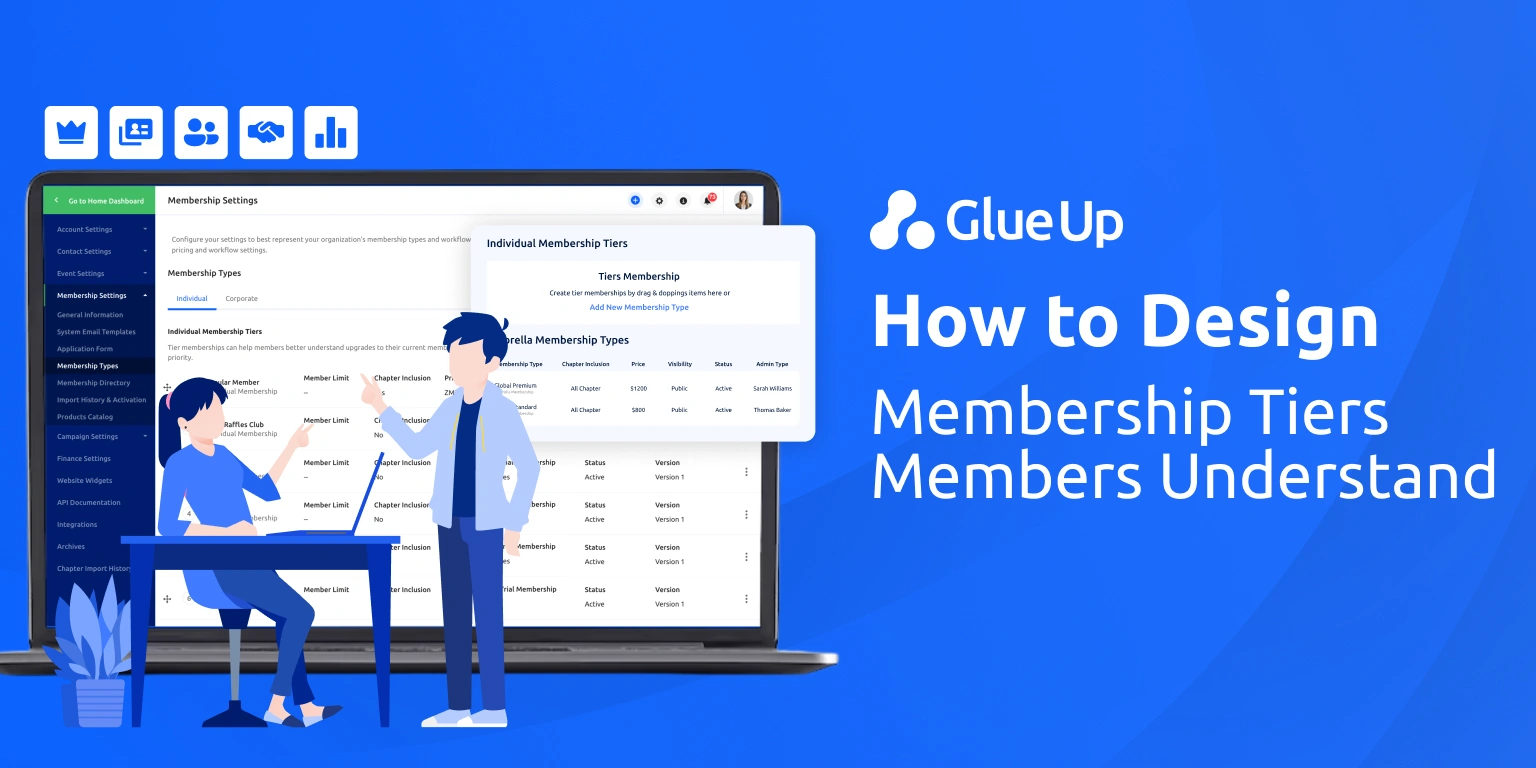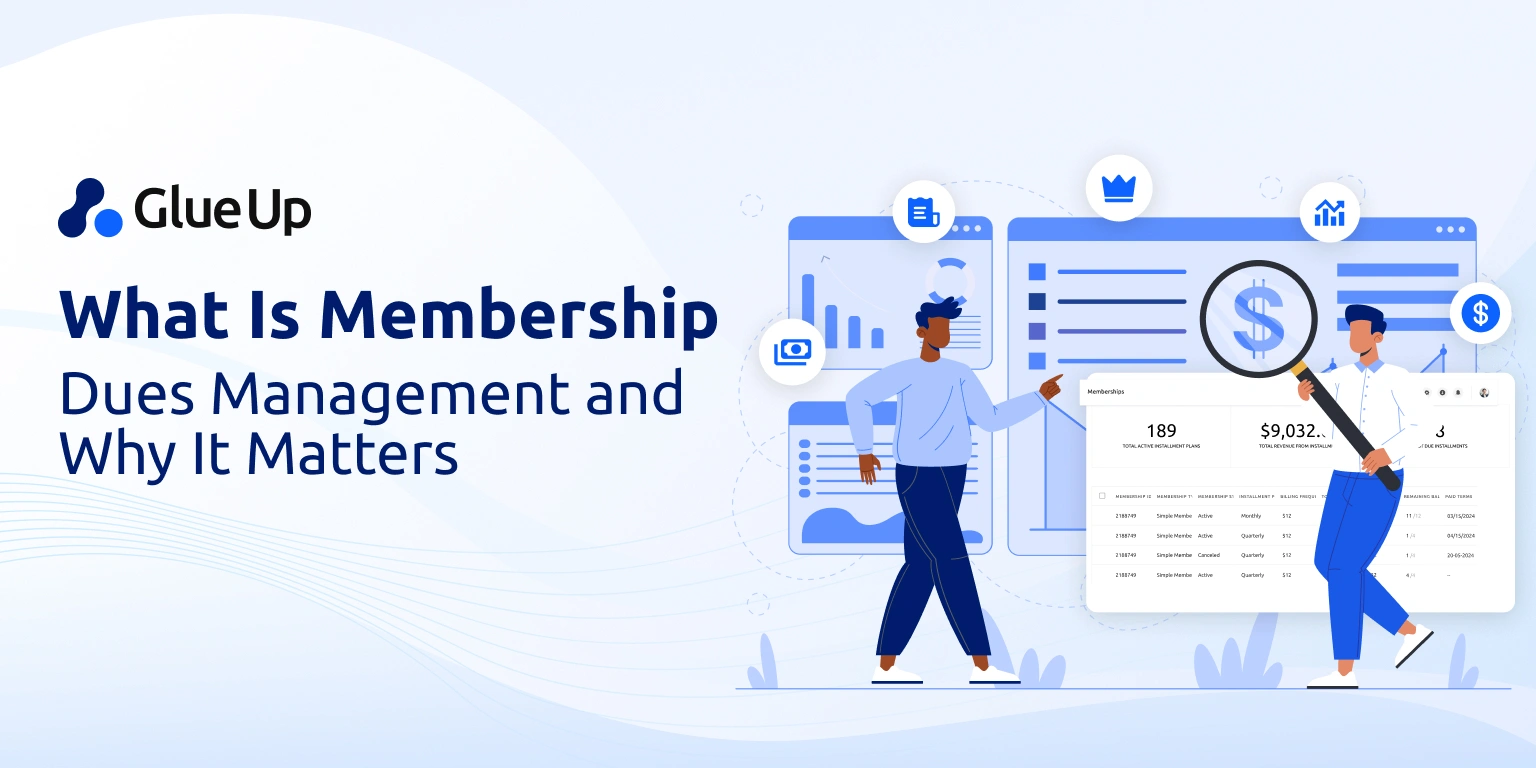
You welcome a new member. The sign-up is smooth, you send the confirmation, maybe there’s a welcome packet. But six months in, they’re quiet. They’ve barely logged in. Their renewal reminder looms. That’s the moment your first-year member experience becomes a bridge to long-term engagement, or a cliff that sends the member off.
Because the first year is crucible. It determines how your new member thinks of your organization, how much value they feel, whether they engage, and ultimately whether they stay. If you nail the first-year member experience, you turn them into advocates, contributors, even your secret growth engine. But if you let it slide, you risk losing more than a fee, you lose potential momentum, connection, and trust.
So, let’s walk through 20 tactics from that moment the member joins through to their year-end renewal. You’ll also get a ready-to-use 30-day email sequence, KPI set you should track, templates for personalized welcome messages, low-cost event ideas for month one and a survey design to spot churn risks. Think of this as the full playbook for improving your first-year member experience.
Key Takeaways
The first 90 days define renewal outcomes. Early engagement is the single biggest predictor of long-term retention. Members who take at least one meaningful action within the first three months are far more likely to renew.
Personalization turns sign-ups into relationships. Generic onboarding fails because every member’s motivation is different. Segmenting new members by type and tailoring welcome messages, recommendations, and content builds trust and relevance from day one.
Technology makes consistency possible, but empathy makes it memorable. Platforms like Glue Up automate the touchpoints but genuine human moments (a mentor’s welcome, a check-in call) are what transform the first-year member experience into loyalty.
Continuous feedback prevents silent churn. Regular pulse surveys at 30, 90, and 180 days help identify at-risk members early. Acting on those insights keeps satisfaction and connection strong.
The first-year milestone should be celebrated. Recognizing a member’s one-year anniversary with a message of gratitude or a small reward closes the loop on the first-year member experience, reinforces belonging, and sets the tone for another year of engagement.
Quick Reads
Phase 1: Day 0 to Day 30
Tactic 1: Pre-join communication
Before they hit “Join,” start signaling that they’re more than a number. Send a short message that says: “Here’s what to expect your first year. Here’s how you’ll get value. Here’s who you’ll meet.” That clears doubts and sets expectations. Expectations matter because when reality meets expectation, trust builds. When it doesn’t, you’ve lost ground.
Tactic 2: Personalized welcome within 24 hours
Immediately after signup, send a welcome message addressed by name, referencing their role or interest. Research shows that associations that personalize early onboarding communications see higher engagement from the get-go. Don’t wait a week. A prompt response signals you care.
Tactic 3: Introduce the onboarding journey map
Give new members a simple roadmap: “Here’s what your first 365 days look like join the community, attend events, complete your profile, get feedback, renew.” Visualizing the journey helps them feel oriented instead of adrift. The best first-year member experiences programs map this journey from day one.
Tactic 4: Member persona segmentation
Not all new members are alike. Some are individual professionals, others represent an organization, some are early-career, others seasoned. By segmenting and tailoring your communication you show relevance. A shift to a “member-first” model is about recognizing these differences.
Tactic 5: Clear articulation of value and benefits
If a new member cannot say in 10 seconds “What’s this membership for me?” then their first-year experience starts on the back foot. Early value delivery is critical. According to one benchmarking article: “Members need to see the value of their membership right away.” Use your first message to highlight three things they can use today: community access, a resource, a discount, a peer connection.
30-day onboarding email sequence
Here’s a suggested sequence you can embed in your first-year strategy:
| Day | Email focus |
|---|---|
| Day 0 | Welcome, first steps, your “fellow member” profile link |
| Day 3 | Touring the value: benefits walkthrough tailored to member type |
| Day 7 | Invitation: orientation webinar or peer-meet event |
| Day 14 | Platform activation: complete your member profile, join the online community |
| Day 21 | Invitation: first-month event (virtual or local) & introduce your “member buddy” |
| Day 30 | Check-in: How’s it going? Quick feedback survey + “what’s next” |
You can tailor each message by member type (individual, organizational, emerging professional). Use “you” language (“Here’s what you can do this week”) and keep paragraph length short.
Phase 2: Days 31–90
Tactic 6: Offer a low-barrier first action
Within the first month you want the new member to do something. It might be updating their profile, making a comment in the forum, attending a short event, or volunteering for a micro-task. That early action builds a sense of participation. Without it, they stay passive.
Tactic 7: Buddy or mentor connection
Assign a volunteer ambassador or peer mentor to each new member. A real person reaching out matters—It signals: we trust you, you’re part of us. In mentoring studies focused on younger professionals, mentoring boosted engagement and connection.
Tactic 8: Cohort grouping
Rather than treating each new member in isolation, create a small cohort of new members who joined around the same time. Host a cohort-intro session. People like to know they’re not alone in being “new.” That fosters belonging, which is central to the first-year member experience.
Tactic 9: Welcome webinar or orientation
Host a live (or well-captured) orientation: who we are, what you can do, where to go, ask questions. Make it live enough to feel dynamic; afterwards provide a recording. This is one of the tactics that associations applying structured onboarding adopt.
Tactic 10: Platform activation and profile completion
Encourage the member to log into your member portal/community within the first 30-60 days. Send a “Finish your profile” prompt with a short list of benefits (“members recommending you, appear in directory, connect with peers”). Early use of the platform is a strong signal in the first-year member experience curve.
Phase 3: Days 91–180
Tactic 11: Personalized content and recommendation stream
By now you should have some data (profile, what they said in signup or survey, maybe platform behavior). Use that to push tailored content: “Based on your interest in [topic], here’s a webinar, article, forum thread.” According to a 2024 report, 71 % of members agree personalization is important.
Tactic 12: Low-cost member event in month one (and follow-up)
Organize a friendly, focused event soon after join: for example, “New Members Coffee Chat”, “Speed Networking: Meet three other new members”, or “Local chapter welcome mixer”. It doesn’t have to be high budget, low cost but high human connection. This tactic supports the first-year member experience by putting interaction at the center.
Tactic 13: Check-in at month 3 (90 days)
Send a quick message from the member relations lead: “How are things going? What’s working for you? Anything you need?” Use this as a light pulse. It shows you care and gives early signal of the member’s state.
Tactic 14: Feedback survey at month 6 to spot churn risk
At six months you’re halfway through the first year. A deeper survey helps you check if the member feels connected, if they’ve used benefits, and whether they have intention to renew. For example: “How likely are you to renew on a scale of 0-10?”, “Have you attended an event? logged into community?”, “Do you feel you’ve received value?” Use responses to flag risk and intervene. Research shows unengaged members are the highest renewal risk.
Tactic 15: Mid-year value touchpoint
Create a “Look what you’ve achieved in 6 months” piece: you’ve attended an event, you’ve connected with peers, you’ve accessed resources. Show the narrative. This reassures the member that time invested is paying off. It anchors the first-year member experience in real progress.
Phase 4: Months 180–365 & Renewal-Lead Strategy
Tactic 16: Renewal-lead campaign starting at ~9 months
Don’t wait until the last minute. Begin renewal engagement at about nine months: a message like “Your first year is almost complete – here’s what you’ve built, what’s ahead, and why continuing makes sense.” Tie it back to the first-year member experience moments you’ve created.
Tactic 17: Track and report key KPIs
Tracking metrics is critical. For your first-year member experience, track such KPIs as:
Day 30 engagement rate (% of new members who did X)
Profile completion rate within 30 days
Event attendance rate within 60 days
Community login rate within first 90 days
Member satisfaction / NPS at 6 months
Renewal rate at end of first year
Referral rate from new members
Use internal dashboards and review monthly. According to studies, early engagement within the first 90 days is a strong predictor of first-year renewal.
Tactic 18: Always-on research and feedback loops
Don’t rely only on annual surveys. Build micro-surveys, pop-ups, forum prompts, live chats. This “always-on” approach lets you catch issues early and refine your first-year member experience in real time.
Tactic 19: Leverage technology and automation
Use your AMS/community platform to automate onboarding flows, set triggers (profile incomplete, no login in 30 days), personalized messaging, cohort tracking. Tools like Glue Up’s all-in-one system help you implement many tactics without heavy manual overhead. This is how you scale the first-year member experience across dozens or hundreds of new members.
Tactic 20: Celebrate first-year milestone
At or near the one-year mark, send a “Congratulations on your first year” message. Include summary of what they’ve done, invite reflection: “Here are 3 ways you’ve engaged. Here’s your next step.” Consider adding a small recognition (digital badge, certificate, event invite). This closure of the first year resets the cycle and reinforces belonging.
Why This Series of Tactics is Mission-Critical
It’s tempting to think of the first year as “we got them in, now they’ll stay.” But the truth is much tougher and more strategic. Research shows new members often carry higher churn risk than long-term ones, engagement in the first 90 days is a strong predictor of renewal.
Your association lives or dies in how members perceive value, feel connected, and choose to act. The difference between a member who logs in once and one who becomes a dependable contributor often lies in how you orchestrated their first-year member experience.
It’s about shifting from “You joined, now here’s a brochure” to “You joined, here’s your next step, here’s your first peer, here’s our roadmap together.” That shift demands intention, design, technology, measurement, and above all human touch.
Anchoring Your Strategy in Measurement and Culture
Even the best-designed first-year member experience will fall flat if your culture isn’t aligned. Your board, staff, volunteers must believe the first-year matters: building the relationship. Studies in the association world show organizations still struggle to truly personalize and engage segments.
You must build internal alignment: who owns new-member onboarding, who monitors KPIs, who intervenes when a new member goes silent. Your AMS and community platforms need to be configured to trigger alerts. Human hand-off matters: a call or personal email beats an automated note any day.
And you must invest in digital hygiene: easy login, clear navigation, minimal friction. According to one association blog: “If your website feels like a relic from the early 2000s, it’s time for an upgrade.”
So, the first-year member experience is a culture and infrastructure shift. One that requires purposeful measurement, iterative feedback and clear ownership.
Putting it All Together: Your Checklist
Here’s what you should do in the next 30 days to get your first-year member experience in motion:
Map your existing first-year journey. Identify key drop-off points.
Create your 30-day onboarding email sequence (schedule Day 0, Day 3, Day 7, Day 14, Day 21, Day 30).
Define your member segments (individual, organizational, early-career) and draft tailored welcome templates.
Design your “new member first action” offer (profile completion, peer meet, micro-volunteer).
Set up KPIs to track (Day30 login rate, Event attendance within 60 days, Profile completion rate).
Configure your AMS/community platform to trigger reminders if no login in 30 days.
Plan a low-cost welcome event for new members in month one.
Draft your 6-month feedback survey to spot churn risk (“How likely to renew?” “Have you attended an event?” etc.).
Schedule a 9-month renewal-lead campaign message and tie it to value already delivered.
Plan a first-year anniversary message/celebration.
If you complete those items, you’ll have laid the core foundation for a stronger first-year member experience and set yourself up to scale from here.
Why This Matters for Your Organization
When you improve the first-year member experience, you improve your whole organization’s future. Better retention leads to higher lifetime value, more referrals, stronger community dynamism. Your association becomes known as “the one that welcomes, engages, grows you” rather than “the one you pay but rarely use.”
In a world of infinite content, virtual networks, free professional groups and hybrid events, traditional associations have more competition than ever. Delivering a standout first year helps keep you relevant. As one survey found: 52 % of members said they wish their association asked for their input more. When your first-year member experience is built on listening, action, personal connection, you meet that need.
And for organizations like yours using Glue Up’s platform: you’ve got the tools to make this doable at scale: onboarding automation, community, events, emails, segmentation, all in one place. Now it’s about using them intentionally.
Commit to Two Tactics and Start Now
Before you scroll away, pick just two of the 20 tactics that you’re going to implement in the next 30 days. Maybe it’s “send a personalized welcome within 24 hours” and “host a low-cost new-member event in month one.” Or maybe “segment my new members and tailor the welcome” and “track Day-30 profile completion rate.” Whatever they are, pick them, schedule them, and assign owner and deadline.
Then share this blog with your team, make it your internal change document. Because improving the first-year member experience is the lever for engagement, retention and long-term success.
You’ve got the roadmap. Use these tactics. Make the first year count. The story of your next year, and the years after, depends on it. And your new members will thank you for making their first year one they’ll remember.



